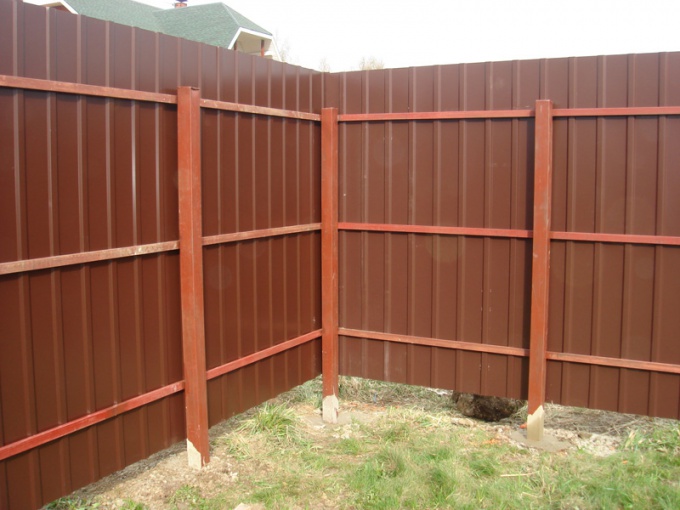You will need
- the a-pillars
- -gravel
- -thin wire, nylon thread or cord
- -antiseptic, water-resistant primer, mastic (if the poles are wooden)
- sand, cement (for added reinforcement)
- -shovel or auger
Instruction
1
You can put any posts: wood with iron or asbestos cement. Before you begin to dig or to drill holes for mounting, make marks at posts. Hammer bars are slightly wider than will stand themselves pillars and pull a thin wire, nylon thread or cord. Thus, you need to mark the bottom, middle and top.
2
Then mark the distance between the posts. It must be the same and match the length of the material you are going to strengthen the quality of the fence.
3
The pits under posts you can dig with a shovel or to drill. If the soil is weak and prone to heaving during frosts, the method of hole punching is completely different from the hole with a shovel. You can dig or drill, but the pillars still need further strengthened. This will require chippings. The depth of pits for the installation, you need to do the same and not less than 50-60 cm In the loose soil you need to dig even deeper given the fact that the bottom of each pit will have to pour sand on him to tamp the gravel and only for the cushion to establish themselves poles. And it will have to do together. One person will hold the post, the second – fill the pit with gravel and to tamp it. It is a versatile method of installation and suitable for pillars of any material.
4
Before installing pillars of wood, you should treat it with a layer of antiseptic. After drying, a layer of a waterproof primer and top apply mastic of tar, which you can buy at any hardware store. This treatment will extend the life of wooden posts many times, and they shall stand no less than iron or asbestos cement.
5
For greater strength, and most importantly, self-confidence, you can set the bottom two sides of the row of pillars, the timbering of 20-30 cm and pour concrete. Get the Foundation for the fence, which will further provide protection of installed material from contact with the soil, and therefore, prolong its service life several times.



